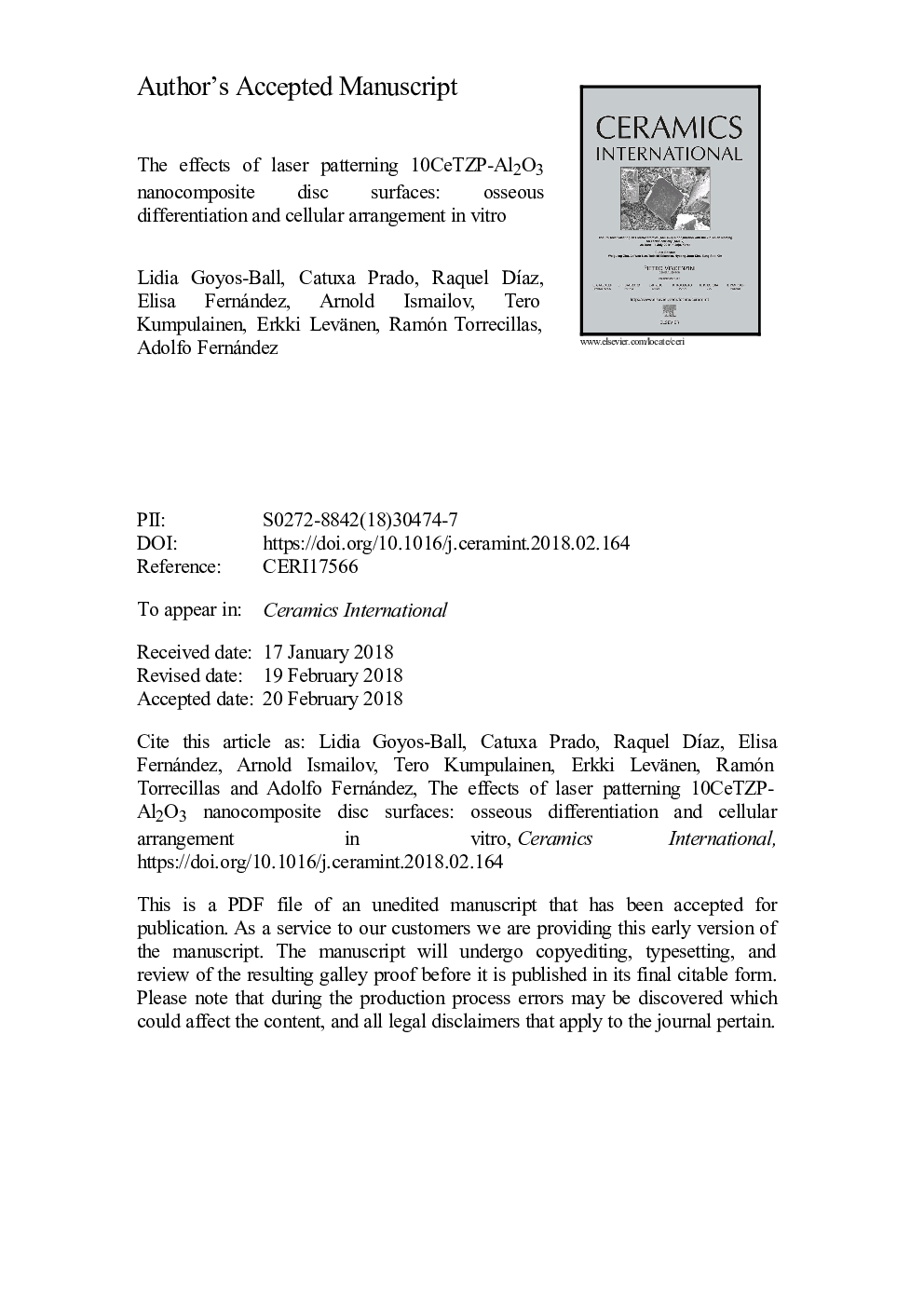| Article ID | Journal | Published Year | Pages | File Type |
|---|---|---|---|---|
| 7887937 | Ceramics International | 2018 | 26 Pages |
Abstract
Customized square grid arrangements of different groove depths (1.0, 1.5 and 3.0â¯Âµm) and separations (10 and 30â¯Âµm) were successfully laser patterned, using a nanosecond pulsed fibre laser, on the surface of 10â¯mol% ceria-stabilized zirconia and alumina (10CeTZP-Al2O3) nanocomposite discs (diameter: 10â¯mm; thickness: 1.5â¯mm). The patterned surfaces and the in vitro biological response of osteoblasts (SAOS-2) towards them were thoroughly analysed. In terms of composition, the laser treatment was found to cause superficial monoclinic-tetragonal zirconia phase transformation and alumina evaporation. In vitro, the most effective grid configuration for osseous differentiation was found to be 1.5â¯Âµm groove depth and 10â¯Âµm groove separation, and confocal microscopy revealed that the cells show a tendency to be sorted as groove depth increases. It is thought that custom-made patterns could be produced to guide cell attachment in vivo, which could favour implant integration and reduce healing time.
Related Topics
Physical Sciences and Engineering
Materials Science
Ceramics and Composites
Authors
Lidia Goyos-Ball, Catuxa Prado, Raquel DÃaz, Elisa Fernández, Arnold Ismailov, Tero Kumpulainen, Erkki Levänen, Ramón Torrecillas, Adolfo Fernández,
